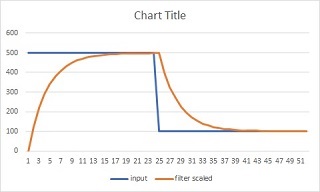Hello expert
There is a double power frequency ripple on the output voltage of Boost PFC, which will affect the reference current waveform calculated in the dual-loop control. How do you deal with this in the program? I have observed that you use the sample averaging register iv.adc_avg[VBUS_CHANNEL] to average 4 samples, but this will not attenuate the double power frequency ripple by how much, right?
Another problem is that the program is similar to [iv.vbus_filtered = iv.adc_raw[VBUS_CHANNEL] + iv.vbus_filtered-(iv.vbus_filtered >> 6); ], how does this filter the data? Q18=Q12+Q18-(Q18>>6)?
Is there an initial value for the variable zvs_flag? I only saw ZVS_CONTROL=OFF.
I’m about to cry, this procedure will make me lose my hair sooner or later ! <^_^> <^_^> <^_^>



